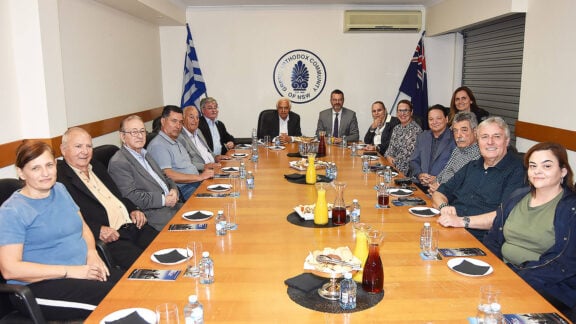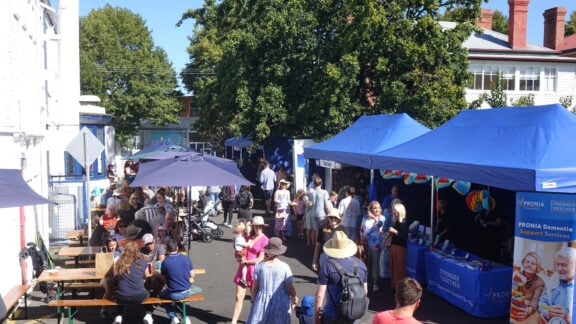I’m always caught off guard every time I attend an exhibition opening by the Melbourne artist Theo Papathomas – continually taken aback by the sheer variety of the styles and subject matter of his art.
His work ranges from intricately painted glass heads and cutting edge photography to figurative, abstract, landscapes and still-life painting.
Each new exhibition seems to be the antithesis of the last, and just when you think you’ve understood something of Theo’s practice, it shifts yet again.
But let’s face it, the reality is that a good artist needs to push not only a few steps ahead of his audience but also beyond his own previous work.
Theo completed a BA in Fine Art from RMIT University and in his early work was indebted to the subconscious dream world of the Surrealism.
Later work, however, is more clearly inflected by the example of the Neo-Expressionist work of the Australian artist Peter Booth, as well as comparable Italian painters such as Enzo Cucci and Mimo Paladino.
Yet, just as Theo began to find his own direction in art, his sister was tragically killed in a car accident.
In the ‘decade of darkness’ that followed this trauma he found that he had lost the drive and energy required to be a painter, and frustratingly felt himself stagnating as an artist before he began to emerge with a new sense of artistic direction.
The new work was now less dreamlike and romantic, shifting towards being simultaneously bolder and more mystical.
In the words of the New York art critic, Douglas Crimp, ‘beneath every picture is another picture’.
It’s an idea that seems especially apt in relation to Theo Papathomas’s work, in which we find powerful debts to traditional as well as more recent art.
As he began to recover from the trauma of his sister’s death Theo explored the tradition of Orthodox religious icon painting with its emphasis on spirituality and transcendence.
In Glass Head and Gun Skull, we can see that, while never actually imitating Icons, he nonetheless absorbed certain specific qualities and traits of this tradition, using them within a modern context.
The key feature of Icons is that protagonists are located in the immediate foreground. Composition is flat and the background neutral so that the subject commands the attention of the viewer.
Thus, in Gun Skull, we are confronted with a bizarre and threatening object: a gun made out of cold black metal and a golden skull with its links back to the symbolic gold leaf of icon painting.
An unnerving figurative work such as this, with its emotional paradox of form and content, undermines any sense of psychological security.
We feel the menace of an indifferent reality that contributes to a sense of existential vulnerability.
Another concern of the artist is the mysteries of the universe – as expressed in the abstract style of the Cosmos series.
Each dot of the brush serves to create the illusion of a vast and impersonal, but beautiful, space – an incandescent light spread across the surface of the painting.
The more time one spends looking at a work such as Cosmos 4 the more our sense of the self begins to unravel.
This suggests another dimension of Theo’s work: what he refers to as the “layers” of life which, although often “invisible” or “hidden”, lie waiting to be discovered in his work.
This layered dimension in a painted sculpture such as Glass Head, Theo suggests, represents “life’s complexities and the different elements of our personalities that are hidden away and needed to be explored”.
Theo Papathomas is currently exhibiting in a group show at the Brunswick St Gallery in Fitzroy until August 27.
.









